Angeliki Diakrousi: Found in Transmissions
Interview with a participant of Underexposed – Sonic Acts’ mentoring programme for young artists
Sonic Acts: Architecture plays an important role in your artistic practice. Can you talk about the ways in which you approach space and rethink public spaces in your work?
Angeliki Diakrousi: I was trained as an architect engineer following the path of
Art/Architecture in the Public Sphere at the Department of Architecture, University of Patras in Greece, which engaged in critical and artistic research in relation to this field. I am intrigued by architecture that challenges the political dynamics of public spaces, disrupts norms, thinks about different ways of appropriating a space, facilitates the environment, rethinks the process of building, and creates conditions for commonalities, gatherings, and multiple utterances.
[1] It eventually allows space to become dialectical and relational in regards to humans, different organisms, ecosystems, and technological structures. It is very common, on the other hand, that the dialogue around architecture revolves around the aesthetics of the form or ‘smart’ urban design. That kind of design focuses on investments, fast developments, intrusive changes, and gentrified practices. It imagines an abstract notion of humankind, emptied of social structures, and goes hand in hand with similar technological developments that promise quick solutions to our problems. It all eventually ends up mostly facilitating the market and (re)producing inequalities.
In my early work,
Hybrid Bodies: Public Gatherings (2012), I investigated the ways in which people gathered in two places of the Occupy Movement in 2011: in Tahrir Square in Cairo and Wall Street in New York. In relation to that, I made a performative public action in Patras in Greece that was interested in the ways women use public spaces and in seeing how they are perceived in the public space – especially Muslim women. This work emerged from a very specific context – refugees from Syria and Afghanistan started coming in large numbers to Greece in 2011 and the image of Muslim women on the streets slowly became more common, but prior to that it was not a common sight. This action marked the beginning of the untangling of the different social potentialities of public squares in my practice.
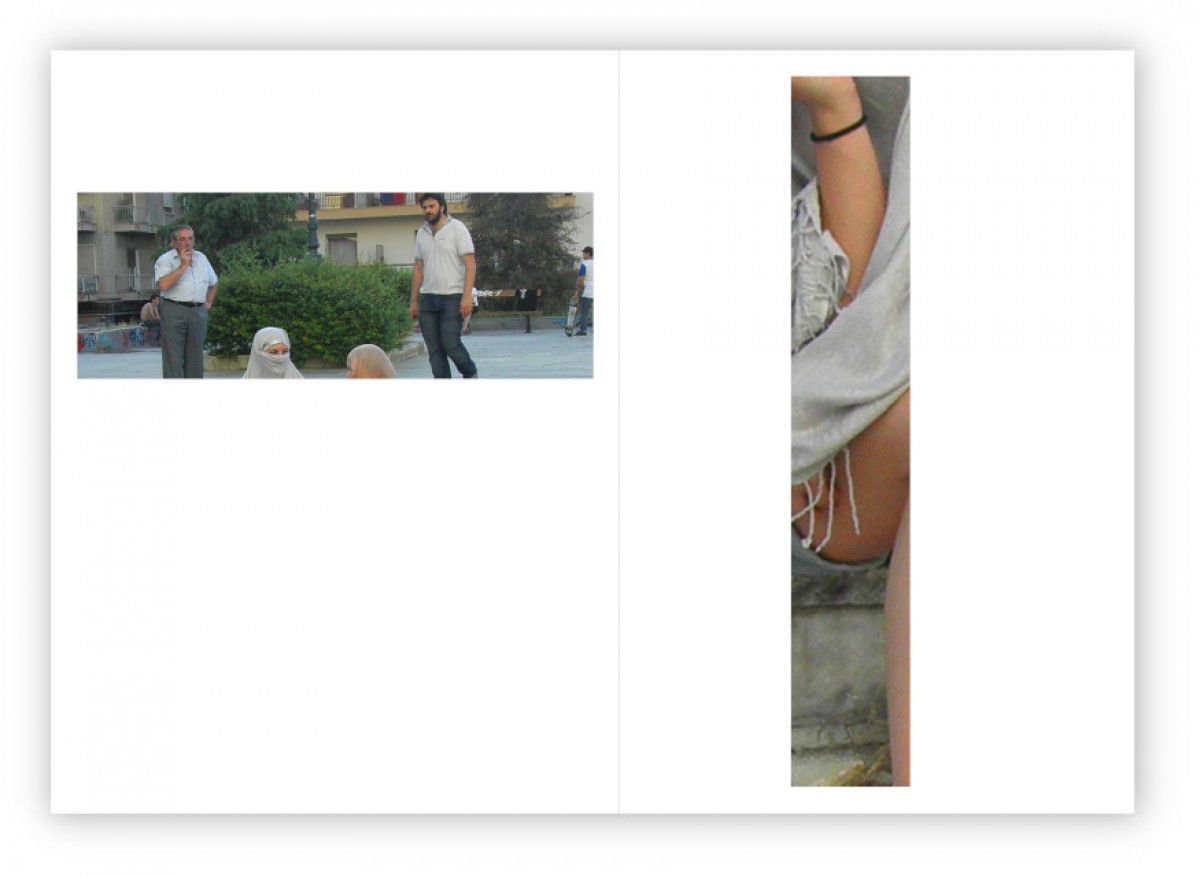
Hybrid Bodies: Public Gatherings (2012), a page from a booklet with photographic documentation from the action in Patras.
I am inspired by the speculative aspect of architecture – its possibility to imagine other worlds. However, architectural projects often end up blending into the existing infrastructure and political and financial rules, and completely lose their revolutionary edge. That is why I think it is important to also imagine – together with physical spaces – the technological, cultural, political, and social systems that create and inhabit them. In 2015, I created a project called
Sound Acts in Victoria Square.
[2] I made
audio devices in order to broadcast, in real time, pre-recorded conversations I had with native Greek, immigrant, and refugee women on a busy square in Athens back to that same square. (You can hear some of them
here.) Daily visits, long observations, and conversations with people on the square helped me understand and map the social, architectural, historical, and cultural dynamics of this space. The long and slow process provided the opportunity for things to unravel gradually, to quietly reveal themselves. I often use this ethnographic slow observation and documentation process in my work. This enables me to see and make visible the incremental, but violent, interventions into public spaces by institutional or financial powers – changing things little by little so that people slowly get used to the changes and don’t see them for the takeover of public space that they really are.
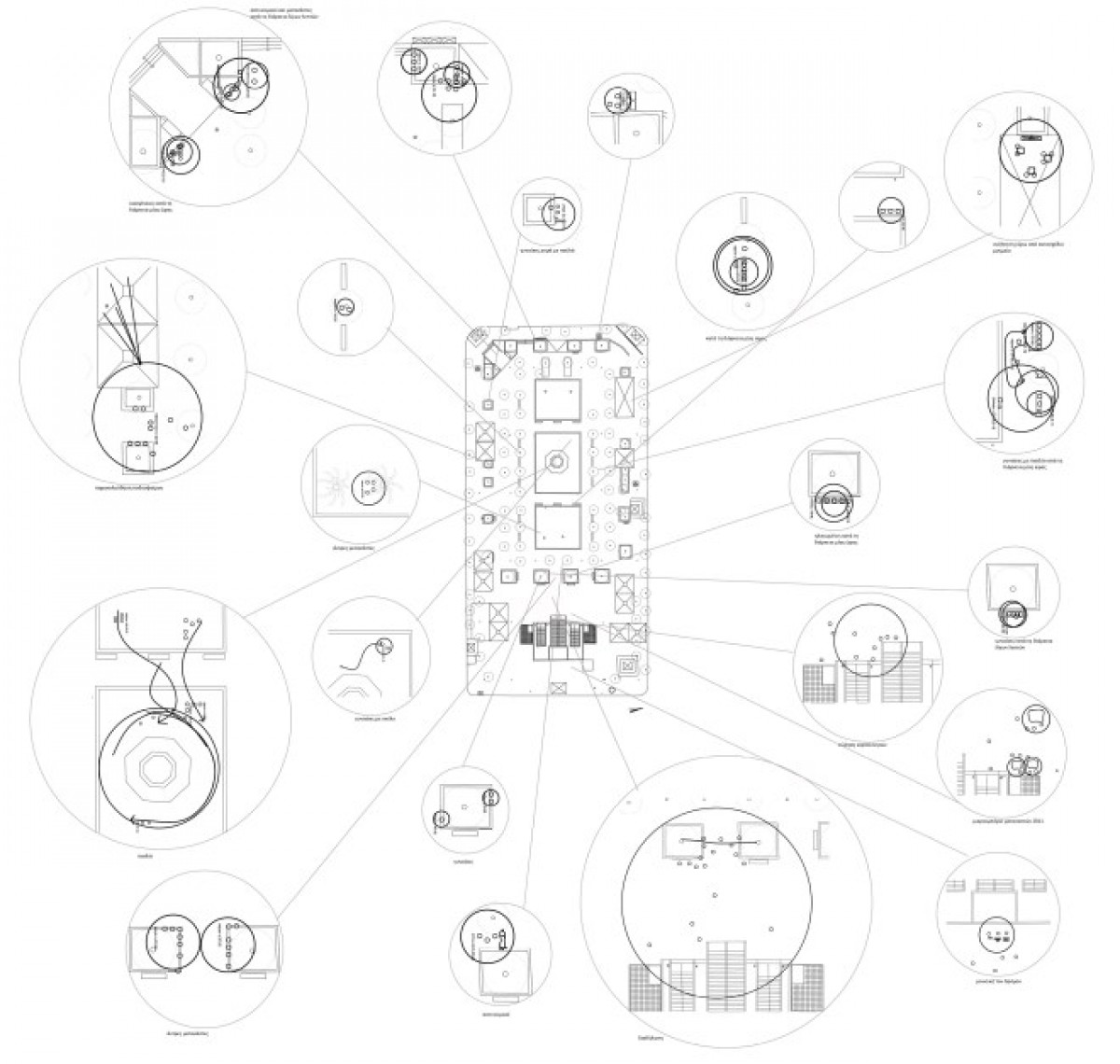
Sound Acts in Victoria Square (2015), diagram of social spaces at the Victoria Square in Athens.
SA: Do you see a difference in public spaces in Greece and in the Netherlands?
AD: Public space consists of many dynamics and layers. Every culture has a different perception of it. What makes a public space ‘public’? An open space doesn’t necessarily mean it is accessible and everyone can use it freely and safely. In some places, such as in Greece or Turkey, social interactions, collective utterances, and political decisions happen outside, in organised or random encounters. In the Netherlands, some public spaces seem more ‘privatised’ and public dynamics are expressed ‘inside’, at home, in the office or in public institutions – rather than on the squares or in the streets.
[3] But people from all over the world also bring their own¬ ways of interacting with the environment and with others when they move here, so I would say that that also brings in an interesting mix.
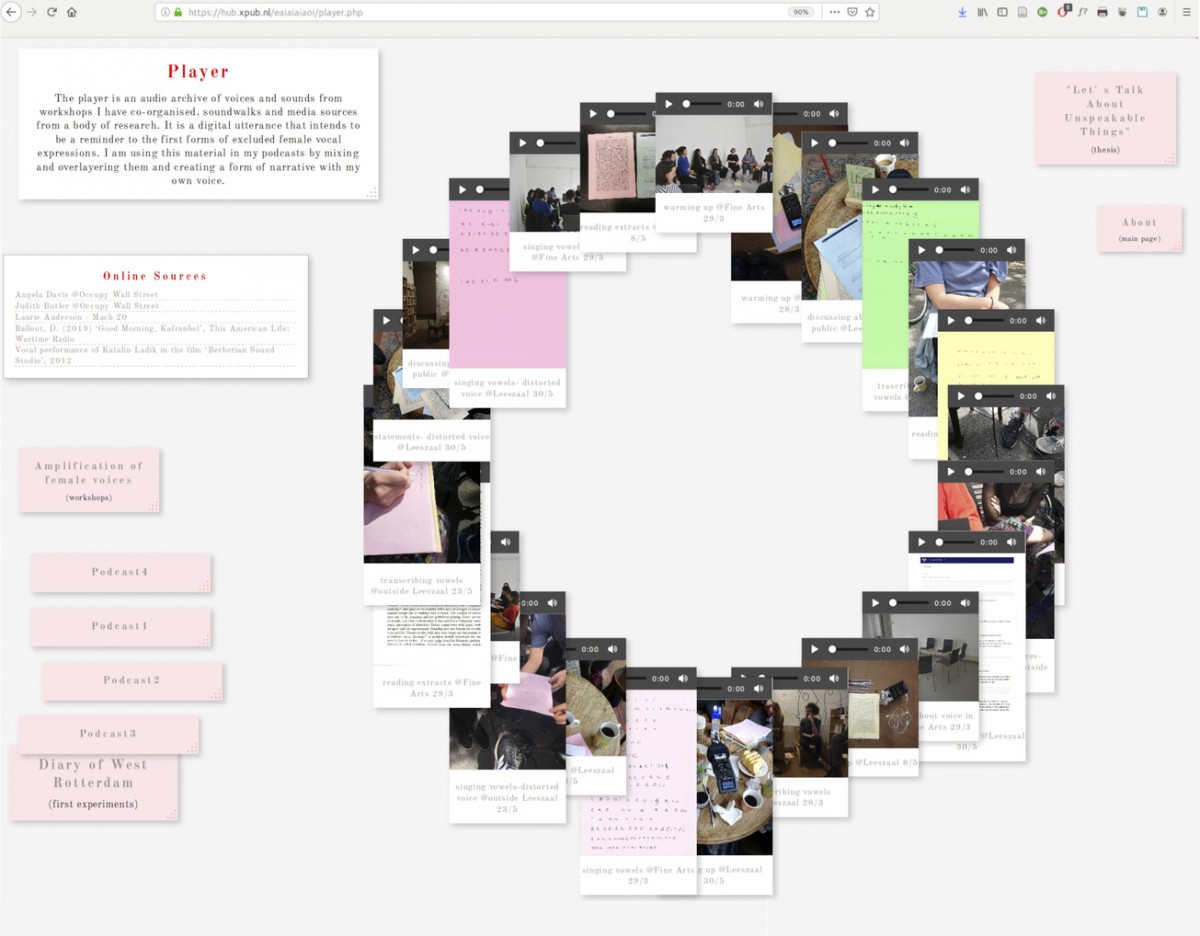
Let’s Amplify Unspeakable Things (2019), screenshot from the project website that contains an audio archive from workshops at Leeszaal and Wereldvrouwen Rotterdam Foundation.
Architecture in Greece often comes with a political framing. There are layers of history and memory everywhere around us, like a palimpsest. Abandoned public buildings, old factories, urban voids, traces of people’s writings on the walls, and half-built constructions as contemporary ruins, are some of the most common elements in Greek urban landscapes. A lot of these spaces often host squatters, undocumented migrants or refugees, so they are occupied as emergency habitations and political places, thus allowing for other ways of using these abandoned spaces. The renewed use of these buildings creates new landmarks loaded with traces of untold histories. I have a feeling that public spaces in the Netherlands are much ‘cleaner’: the traces left by various social movements are erased faster, are contained, or are at least less visible.
SA: Can you extend the notion of public space to the online sphere?
AD: Since I started studying
Experimental Publishing (XPUB) at the Piet Zwart Institute in Rotterdam – which investigates the acts of making things public and creating ‘publics’ in the age of post-digital networks through design and technology – my artistic practice has extended to digital spaces and networks. In my work I focus on the fact that public spaces and online spheres are interconnected and hypermediated by technological devices and infrastructures. The crucial question for me is how we can claim this hypermediation collectively, how we can understand it and transform it. In the collective artistic research
WordMord (2019–ongoing) – which first started within the context of the Centre of New Media and Feminist Public Practices in the Department of Architecture at the Thessaly University – as a group we are intervening into existing legal, linguistic, social, and online structures with hybrid tools and methods for poetically subverting and rewriting derogatory narratives and consequently trauma and violence in public space. WordMord seeks to connect art with queer feminist activism and emancipated life through collaborations with artists, activists and feminist coding collectives, and shape an online rhizomatic space as an active archive.
[4]
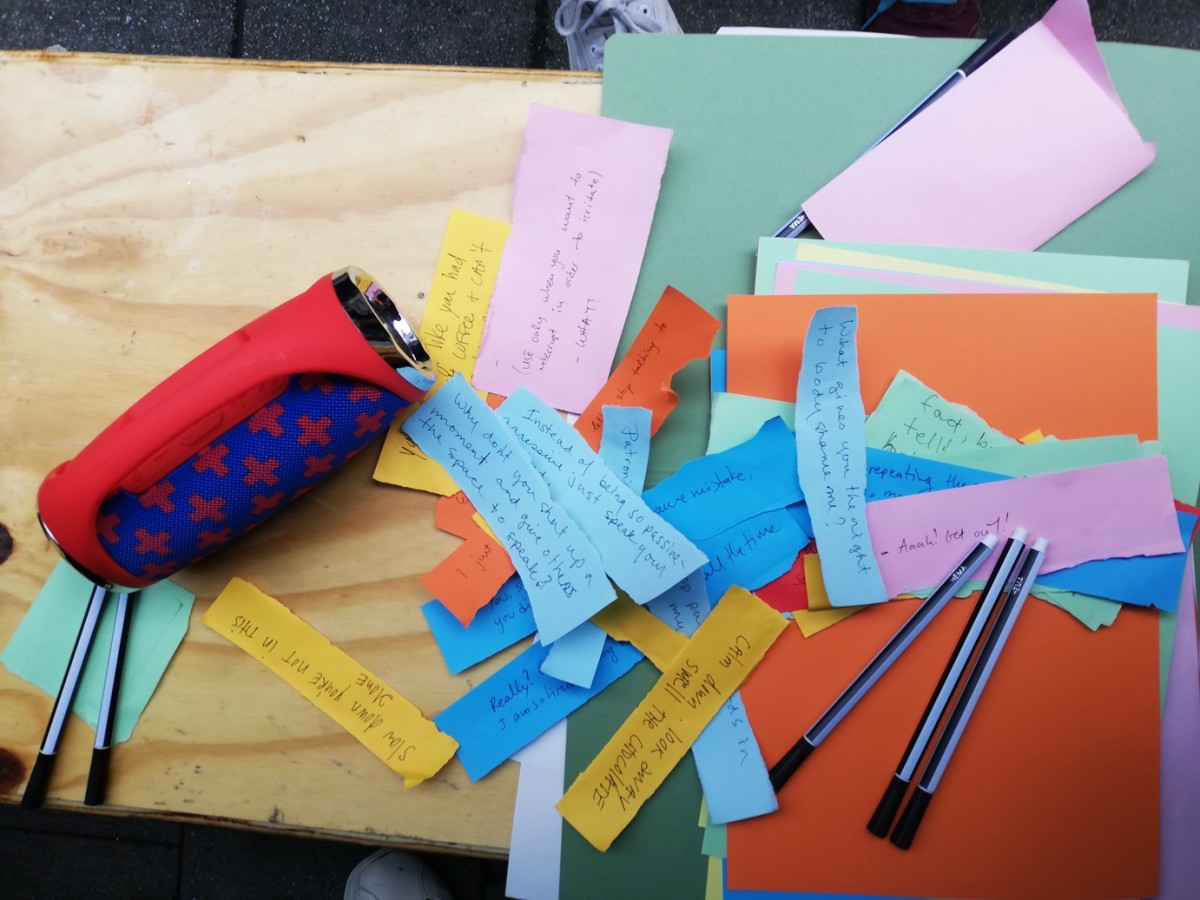
Amplify Angry Voices (2019). Workshop held outside of Slash Gallery
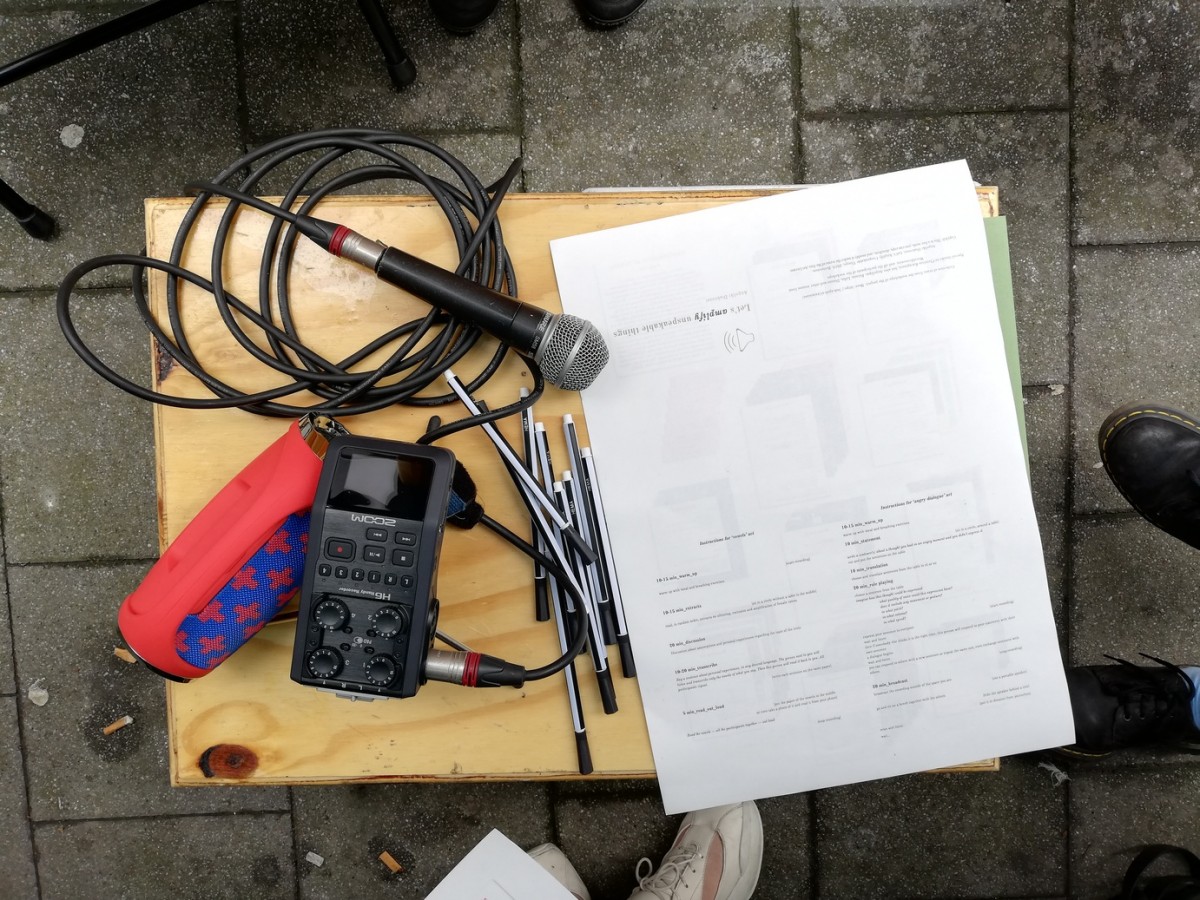
Amplify Angry Voices (2019). Workshop held outside of Slash Gallery
: I was always interested in the invisibility of sound. Sound, as a non-visual element, is mostly ignored in architecture. However, it plays an important role in our common spaces; it carries collective memories, such as oral histories and soundscapes, that make up the identity of a place. Sometimes it is also used to drive away specific people from public spaces, for example by transmitting high frequencies in border crossings or on the squares, or by playing annoying music outside supermarkets. There are many historical and current examples where sound has been weaponised against homeless people and refugees. These systems of oppression have been embedded in our cities, but this has been done at such a slow pace that the process seems less aggressive. We can also see it in the ways our presence in public space is nowadays controlled through apps and ‘smart’ technologies, or how our voice data is collected and processed through speech recognition technologies in mobile phones.
[5]
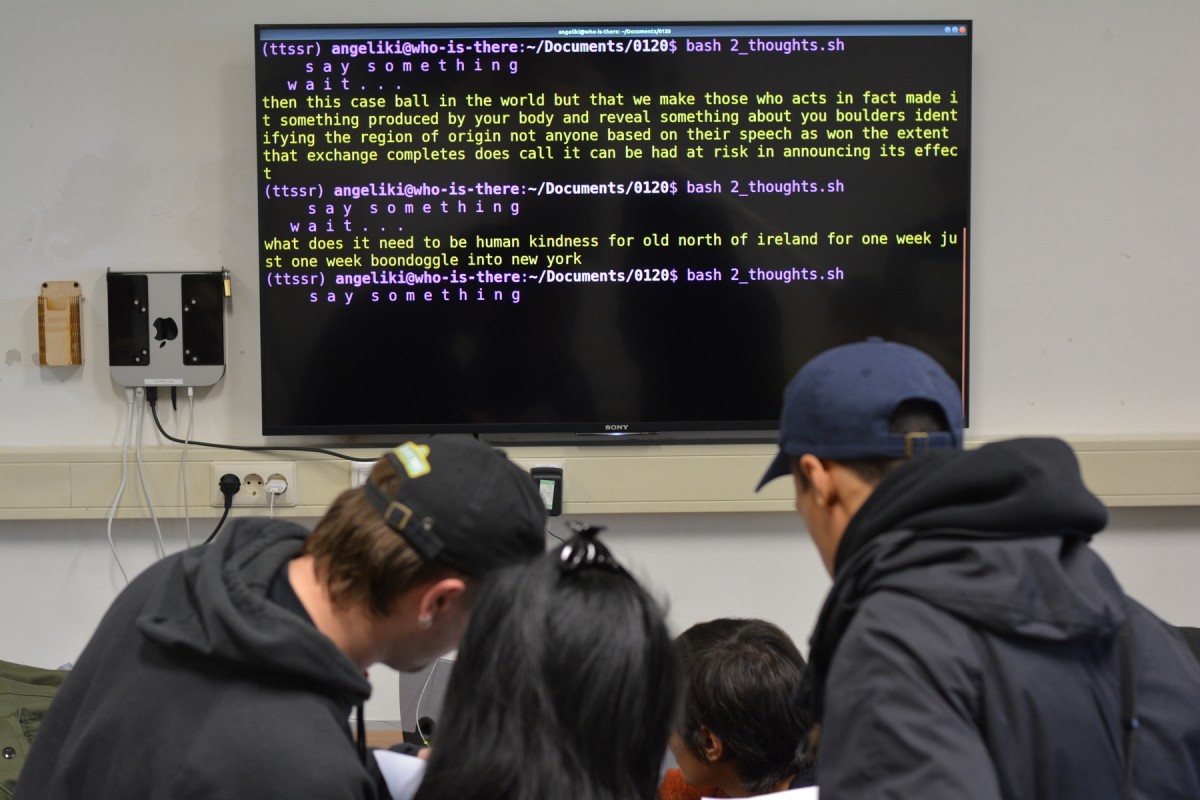
Ecstatic Speech (2020), workshop initiated by Amy Pickles. Photo by Amy Pickles.

The Temporary Autonomous Bureau – T.A.B. (2018), workshop at TENT, Rotterdam together with inhabitants of the Poortgebouw, a historic former squat located next to the River Maas, and students from the Experimental Publishing Master Programme at the Piet Zwart Institute in Rotterdam.
In my new work,
Hunting Mosquitos – developed in collaboration with
TENT Rotterdam and curator Linnea Semmerling – I am researching ‘smart’ technological devices in Rotterdam called ‘mosquito alarms’, which are used to control noise and loitering on the streets. These machines are tuned to emit frequencies that can be heard primarily by younger people, thus creating an environment that ‘repels’ kids and teenagers from gathering in public spaces. I am interested in the politics of listening and different perceptions of noise and I want to examine how (sound) technology changes the use of public spaces.
I am also working a lot with digital infrastructures – such as online radio streaming platforms and server networks – and that gives me another perspective on sound in relation to public (digital) spaces. The difficulty to fully understand computational infrastructures such as social media algorithms – and the fact that the most common ones are made by commercial or state institutions – creates an alienated experience in the online spaces we communicate in. I think that technology is far from neutral – it reproduces biases and social injustices. There are some artistic, technological, and publishing initiatives I am connected with – such as
Constant in Bruxelles,
Varia in Rotterdam, and
Hackers & Designers in Amsterdam – that are trying to rethink and redesign technologies as social mediums.
SA: How did you start working with radio and streaming sound, and what interests you in those communities that work with radio?
AD: I met various communities and artists that work with wireless technologies when I moved to the Netherlands. And I have realised that I am more interested in the complexities of making radio art than sound art. My sound is not sophisticated because I am mostly streaming it. I don’t use good mics or high-quality gear, and thus the sound comes out distorted. But I have become attracted to these distortions of the medium and they became part of my work
Radio-active Monstrosities (2020–ongoing). This work is a web audio interface that enables computer microphones to transform our voices into various ‘malformed’ sounds, which I call ‘audio masks’ – a term borrowed by Laurie Anderson. The work addresses the ways of listening to voices that are perceived as ‘annoying’ because of the technological distortions of the medium and listening bias, which of course perpetuates racial and sexist prejudices.
The technological structure of the radio creates conditions for collective actions. I am particularly inspired by the radio as a medium because of its ability to reach a wide range of audiences. I also like the involvement of amateur communities, which produce and share technical knowledge, although they can be very male and technology-only oriented and uninterested in the systemic issues around it. Since this year I have been working with a live streaming infrastructure called
Narrowcast[6] at Varia in Rotterdam, a space I have joined in 2020, and have also been involved in the
Temporary Riparian Zone project (2020).
[7] It is a live composition interface that imagines online radio potentialities through explorative ways of streaming and speculative writing with a ‘together-made’ broadcast server and an online collective writing tool.
[8] During the pandemic I have done a lot of
online collective radio transmissions and it has been such a fun process.
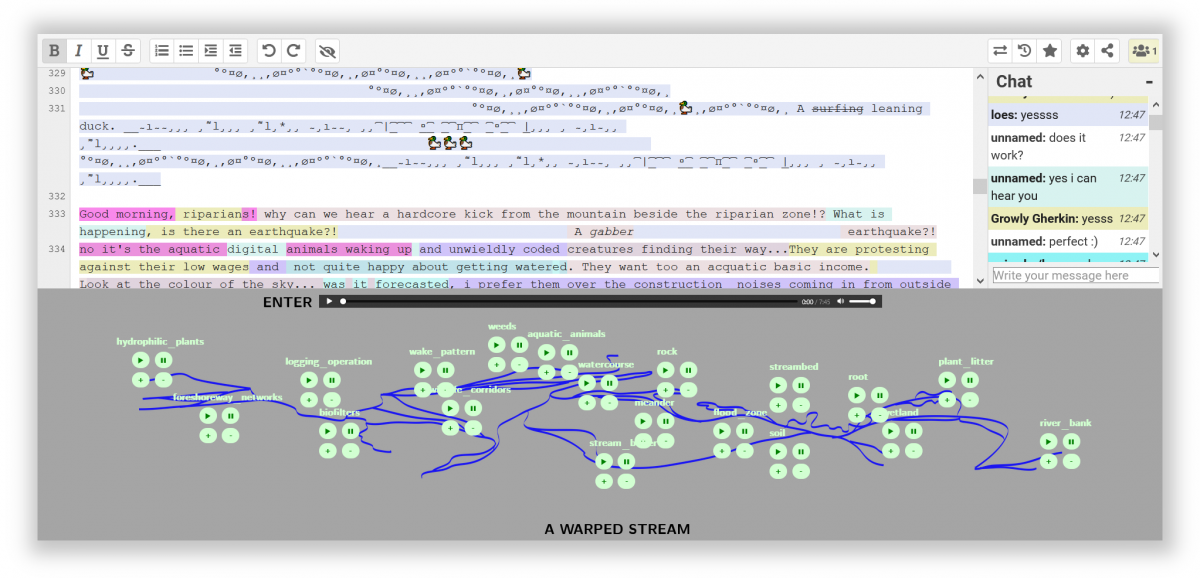
Temporary Riparian Zone (2020), screenshot of the interface during a workshop at Hackers & Designers Summer Academy 2020.
SA: You mostly work with already existing infrastructures. In other words, you are interested in finding different ways of appropriating technological and architectural mediums. Can you talk about this aspect of your work?
AD: I want to relate to the medium, share the knowledge, and understand it collectively.
[9] I prefer hacking or creating hybrid devices and technical infrastructures rather than designing and bringing new ones to the table. I am always aware that access to the medium differs depending on class, gender, race, geographic location, etc. So, I would say that this techno-social approach is about challenging the medium by communicating through it and, at the same time, ‘opening’ it and rebuilding it together with others. I have been organising, either alone or with others, numerous workshops where hands-on practices are combined with untangling of social questions and performative actions, such as
Distortions on Air (2021),
Temporary Riparian Zone (2020),
Amplify Angry Voices (2019) and
more.
Hacking, open source, and low-tech approaches were always part of my work. My desire to understand the hypermediation of public spaces, the interconnection of digital and public spheres, and the workings of various technologies and infrastructures, drove me to engage with technology through a hands-on approach. This process also made me realise how limited the access to this kind of knowledge is because it is traditionally dominated by white male actors. Through my concerns about the presence of female voices in online and public spaces, and also through the need to find a safe space where I could acquire and share technical skills, I got involved with several techno-feminist groups and initiatives, such as
Eclectic Tech Carnival (/ETC),
Feminist Search Tools, and
Feminist Hack Meetings. I like to think of technologies and mediums as social public spaces where random encounters and emergent imaginaries are allowed and encouraged.
1. In Greek language there is a beautiful word συμπεριλαμβάνω (symperilamváno), which means including together with other things, including more.
2. The work was developed under the context of my graduation year in the Department of Architecture, University of Patras with the supervision of Dr. Panos Kouros
3. In my graduation project Let’s Amplify Unspeakable Things (2019), I co-organised together with Christina Kaρagianni gatherings with the theme of amplifying female voices. We met in Leeszaal, a reading room in Rotterdam, and in the space of the Wereldvrouwen Rotterdam Foundation. In both of these cases, I interacted with active public spaces that exist ‘inside’.
4. The initial research group of the project consists Vassiliea Stylianidou aka Franck-Lee Alli-Tis, Angeliki Diakrousi, Christina Karagianni, Stylianos Benetos aka Oýto Arognos, Mounologies: Eleni Diamantouli and Anna Delimpasi.
5. OuNuPo + ttssr, Ecstatic Speech and Gossip Booth are a couple of experiments I did with speech-recognition tools.
6. Narrowcast was made together with Joana Chicau and Luke Murphy.
7. Temporary Riparian Zone was made in collaboration with Cristina Cochior.
8. The tools we used, Icecast and Etherpad, are open source, and are hosted on Varia’s server.
9. For example, in a recent online radio event called Platform Alliance hosted by fanfare and radioee.net, shared via PUB and joined by Varia and Mushroom radio, we shared knowledge and experience related to online broadcasting platforms.
Angeliki Diakrousi examines the politics of public realms through the lens of art, architecture and technology. Recently, she started working with collective speech platforms, listening channels, publishing and digital archives. She practices feminist approaches to technology and critical computing and she works with embodied practices and nurtures dialogical methodologies in relation to public spaces – her recent involvement in Katarina Jazbec’s film
You Can’t Automate Me (2020) brought her even closer to such practices. Angeliki graduated in Architecture from the University of Patras in Greece and holds an M.A. from Experimental Publishing at the Piet Zwart Institute in Rotterdam. She has joined a space called Varia in Rotterdam, where she is involved in co-learning activities and research. Angeliki is currently a tutor at the Willem de Kooning Academy in Rotterdam.





